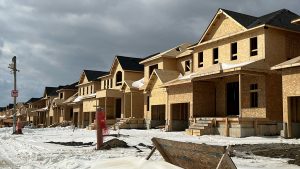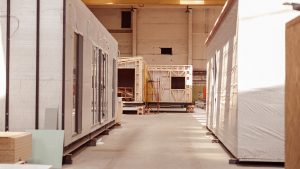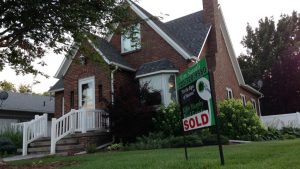The goal of a recently released research project was to create a sustainable, affordable, accessible and culturally appropriate (SAACA) housing model tailored to meet the specific needs of Indigenous women, girls, two-spirit, transgender and gender-diverse+ (WG2STGD+) people.
(CMHC) and the (NWAC) recently announced plans for a new housing design model for those who are disproportionately impacted by the housing crisis in şÚÁĎłÔąĎÍř.
Through the research project, billed , NWAC conducted extensive research and worked with architects to design plans for a SAACA housing design framework.
The project, which looks at Indigenous housing and housing for those in greatest need, received $100,000 in funding from CMHC.
NWAC’s research identified successful housing features and models for SAACA housing in First Nations, MĂ©tis and Inuit communities in şÚÁĎłÔąĎÍř.
Research and feedback contributes to proposed housing design
The research included conducting a literature review aimed at understanding challenges faced by Indigenous communities in obtaining, building and maintaining suitable housing in urban and rural areas, reserves and remote regions throughout şÚÁĎłÔąĎÍř, said Carol McBride, president of NWAC.
It also consisted of performing a cross-jurisdictional analysis to evaluate regional housing programs and identify best practices for housing solutions serving Indigenous WG2STGD+ people.
In addition, the group ran a national online survey to gather insights and suggestions.
In collaboration with architects and incorporating key features and metrics identified through the research process, the association developed a preliminary design for a SAACA housing model.
“At present the housing model addresses barriers in housing affordability, sustainable design, the use energy efficient material and technology such as air circulation units, heated flooring,” said McBride. “We have to take into consideration also the maintenance and the operation of these models and of course cultural elements.”
One key focus area was to identify the differences among subgroups of Indigenous WG2STGD+ people and housing needs based on geography within şÚÁĎłÔąĎÍř, given the vastly different climates, ground conditions, traditional and cultural housing.
The housing design framework includes features such as accommodating the needs of larger families and multigenerational living, windows on all sides and skylights for natural light, a central gathering area, free-standing round wood stove with a dining table around it, an open kitchen concept and an exterior attached storage shed.
In terms of sustainable features, it incorporates solar panels on the roof, rain collectors and a greenhouse leading to the rear yard. It also takes accessibility into consideration with elements such as wider entrances and affordable features such as exceeding recommended minimum insulation requirements to reduce heating and cooling costs.
“Proximity to nature, addressing high construction costs, limited building seasons, that has to be taken into consideration,” said McBride. “We had to take into consideration the regions as well: the rain fall, the snow fall, the permafrost.”
Funding needed for prototype
The next step is for NWAC to secure funding to develop and test a prototype of this housing model. The proposal is to build it in the Wabanaki Territories in New Brunswick.
“This phase is crucial for validating the design and making any necessary adjustments based on the real-world feedback and performance of the unit,” said McBride. “There is also the community-based research NWAC plans to continue…to ensure that the housing model reflects the intersectional and distinction-based approach.”
The major challenge of this stage is securing capital funding for the construction and testing of the prototype, she added.
“Efforts are currently underway to obtain funding for the proposal submission,” said McBride. “I also met with the minister a few months back and I’m hoping that early this fall he will take the time to look at the design. That would be really rewarding if we were able to start getting some funding to realize our plans.”
The group is hoping to get the backing of government for the project.
“Let’s get the prototype up to see where this goes. I think it will be very worthwhile,” McBride stated. “We can evaluate once a prototype is built.”
Follow the author on X/Twitter








Recent Comments
comments for this post are closed